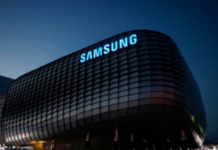Seoul– Smartphones with high refresh rate displays are optimal not only for gamers but also for users who watch videos on their smartphones, since a high refresh rate makes video playback smoother, Samsung Electronics said on Monday.
According to the developers of Galaxy S20’s display, the high refresh rate is a revelation when it comes to gaming, fighting games in particular in which, split-second decision making can prove the difference between victory and defeat and a display with a rapid refresh rate can provide users with a vital edge.
“A screen with a high refresh rate displays more images every second, allowing you to pick up the movements of your opponent’s character quicker and act that little bit faster. A 120Hz display shows a new image every 0.008 seconds,” said Michael Kim, an engineer from the Display Group at Samsung Electronics’ Mobile Communications Business.
Using a display that features so many changes in a short period of time additionally has applications in underpinning and facilitating 3D gaming.
While a 120Hz refresh rate serves to optimize a user’s gaming experience, the original goal behind developing this high screen refresh rate was to provide a better screen control environment, making it easier for users to touch, scroll and swipe their screens.
“When users are scrolling on their display, the smoother the screen will flow, resembling the analog experience, the more comfortable it is to use,” explained Kim.
The resulting effect is that of watching something happen in real life right before your eyes.
In today’s market, most solutions offer displays with 60Hz refresh rates (60 images displayed per second), and any solution with a refresh rate higher than this is referred to as a ‘high refresh rate display’.
Many conventional displays will scan a finger scrolling on the screen up to 120 times per second, but the Galaxy S20 goes beyond this by scanning finger movement up to 240 times per second.
“A high refresh rate on a display helps give a real, grounded sense of touch to users when they are scrolling,” said engineer Sung-won Ryu.
Some users may not be aware of the true strength of a 120Hz display.
“With apps such as YouTube now offering videos in basic HD quality, when you go back and watch older videos on the platform in SD, you realize that the quality is actually much lower than you originally thought,” explained Kim.
The same is true of 120Hz displays.
“People may have no complaints about a 60Hz display, but once they get used to the quality of 120Hz, they can never go back to 60Hz,” said Kim. (IANS)







